Have you not heard of Lamu? Now I’ll tell you about Lamu, for there travels rich people on vacation to day. Prince of Monaco resort there. The king and queen of Norway have been there. Wealthy people have taken Lamu in our days , and some more…..
The town of Lamu is located along the coast in the far north of Kenya. Have been wanting to go there. The city is part of Swahili culture along with Zanzibar, Mombasa, Kilifi and Malindi, muslim, isolated in many ways – you get there by boat or plane. No cars, only donkeys (and two motorcycles ). The city is said to be the best preserved of all the Swahili towns and the one that best preserves the tranquility that characterizes the Swahili culture. I read that in Lamu, you do not do anything, just be. The city is so exotic that it is in the UNESCO list of heritage in the world that are worth taking care of. Moreover, the city is so exotic that it has attracted wealthy people who built the old houses into a hotel – also a Norwegian. Besides, my cousin was there and he said – there you must go, Bjørn .
The Isles of Lamu was a period vulnerable to attack from the north. One hotel is so close to Somalia that it was subject to raids by al – Shabab . Two tourists were killed in the two raids and the Norwegian embassy did not recommend tourists to travel to Lamu . Now it’s a while ago that Lamu has been considered a dangerous place to be, there are many places that are dangerous. Security measures are right there – we were stopped by police three times in the 110 km from Garsen and to the marina where we were went by boat to the town of Lamu. Travel to and from Lamu I will describe in another article. We did?nt fly like most people, but we drove 1000km from Nairobi in car. Next time I will fly ….
The final distance to Lamu must nevertheless go on a boat. We came to Mokowe where we parked, was surrounded by a crowd of young men who would carry suitcases and shool us to Lamu. It was a trip with a speedboat which did away trip of 15 minutes. But it went well and before we knew, we were installed in the hotel which was located right on the harbor. It was in fact an old merchant house before it was made into a hotel – incredibly central, but not exactly high standard. Even during installation, we made an appointment with an older guy who would guide us around town – here we needed guidance.
Øverst i skjemaet
The city has its roots far back in the Middle Ages. It was early trading, but it was not until the Arabs arrived the place began to flourish. The Arabs built large, big houses uptown, the natives lived in the second district. It is claimed that you can still see the difference in skin colour on them stemming from Arabs and those who do not. Arabs system built on a network of clans. The Portuguese were also visiting Lamu, but usually remained little further north on Pate Island . Afterward, the sheikh of Oman grabbed the control , and a time was Lamu controlled from Yemen. Later the sheikh moved to Zanzibar.
The cities established along the coast of East Africa belonged to the same culture. Swahili culture is a cultur of assimilations where many items were added to the culture from outside. The language, Kiswahili, includes elements from Bantu , Arabic , Hindi , Portuguese and English. Lamu did really flourish in the 1800s. Then was the biggest and nicest houses in town built ( those currently purchased by wealthy people and turned into hotels). With these houses the Swahili architecture flourished. There was no imitation of the Arabic, it was an independent African architecture which was developed which also took Arabic features . With the British entry in the end of 1880?s it was the stop for Lamu and the other coastal cities: The British outlawed the slave trade .
In Lamu, however, came Swahili culture to live heavily on, not least because Lamu was a learning center for Islam with an Islamic academy as the most important center. It strikes one as well when one wanders around town that much is influenced by Islam. There are 23 mosques and the academy, but it is also a Catholic church. How people do dress is characterized by Islam, both men and women. The men most often in their robes, the women in their colorful costumes, some even completely covered. I can not quite dress codes in the Muslim world, although women are black, the suit are richly decorated with gold and other patterns. But other must respect the Muslim dress code and go under cover in any case with skirts and covered shoulders. The children then at least to have fun in their flowing robes, like most children.
Our tour guide took us into town – we entered a world I have not seen in any other city before. Lamu waterfront – the main street facing the sea was spacious enough, even if we also had to watch out for the donkeys who mostly went where they wanted. The donkeys were the only means of transport in the city itself , something else was physically impossible (I saw two motorcycles ) . The streets inside town itself was only two meters wide – in some places barely enough there . The city’s main street, Harambe Avenue , was perhaps some places whole 4 meters. You had other words concentrate when you went : Look down for not tripping or stepping in donkey poop, look to the sides to see the beautiful front doors and the finely decorated walls, looking ahead as not collide with people, look upward to see the house itself . It went well. The city had a brilliant individual sewage system which was now threatened because of capacity issues. Many houses had a decorated front door with an open room with a bench. It was here people could meet if the host did not want that the meeting took place in the private room, behind the door. There was thus a sharp distinction between the private and the public. Otherwise it was inevitable that this town had less beautiful areas, with garbage and donkey poop , etc. But it was exciting to walk around – a city that you surely could get lost, even you should only walk a short distance. .
Another part of Lamu, which also was important was the sea life. Lamu got all its supplies by sea, was now one moment. The dhow was the Swahili coast’s most distinctive sail ship . Of course we had to try!
Captain Dolphin (all captains have such distinctive name ) arrived in the evening and introduced himself to us. He offered to take us on a tour of his dhow the next day. He was a young man in his late 20s (something his crew also was), and he knew what he was doing. We made a deal – and early next morning we were ready for departure. The captain came and picked us up, and there on the pier was the wonder, the dhow . Fatma was skeptical. With my eyes the look was inviting. A little disappointing was that the first stretch – into Manda chanell between mangrove forests, used an outboard ( 15hp ) . The explanation was that we had some short times in relation to the tide . We were visiting the ruins at Takwa, the ruins of a swahilitown which was abandoned as late as the 1800s. No one knows why it was abandoned , but there are indications that it was abandoned because the water in the wells was too salty over time . Now it was a ruined town with mosques, prince residence and school which we peacefully walked around and experienced. We have been in similar ruins before, Swahili coast dotted with the them. Most famous are the ruins of Gedi as we visited two years ago. Among some ruins grew the giant baobabthrees . Eventually we got a beautiful view of the Indian Ocean. Captain Dolphin brought us into a flat-bottomed barge that we could get out to the dhow again. And so began the voyage.
I discovered that Captain Dolphin had mobile in a waterproof plastic bag labeled Telenor. Yes, he had a very good friend from Oslo who ran anti drug activities both in Oslo and in Lamu . We asked if there was a drug problem. Yes, heroin is now heavily into the market among young people in Lamu. Now I understood why the policeman outside Witu was so interested in inspecting my toilet bag . In a book I was told that such dhowtrips as we participated, could be a trip where drugs were used and you could end up lost with the mad captain, what we had obviously not done. A little later during the trip when we did swimming at Diamond Beach village, the captain introduced us to a Norwegian couple who were also on holiday in Lamu. They worked in an orphanage in Nairobi, and had been recommended Lamu and Captain Dolphin by their boss at the orphanage. Then I first discovered that he had named his boat ” Brage ” ! But why we did sail under the Brazilian flag, is not known.
Lamu has in fact some wonderful beaches we explored – even with cows. We did practice a little swimming. Unbelievable water. The danger of sunburn was great.
I’m no expert on sailing, has hardly been on board a sail ship. Sailing with the dhow is very comfortable, you almost float off the water. (Hard to describe). We got a ride out of the Indian Ocean in pleasurable waves and high speed. There were a crew of three and they turned the sail, tightened and did sailors work – they know their job. Very different from our sail boats with two sails. Besides, there were those who made the luncheon. It was of course grilled fish, vegetables and rice boiled in coconuts – mmmmmm. The return trip was devoted to singing and drums (bins) in which one can call a potpourri a la Lamu.
Captain Dolphin never ceased to be our host in Lamu. In the evening he showed us around to some specialty stores i.e for buying halwa, and in the morning the next day when we left the island, he stood on the pier and wished us a safe journey.
Lamu is a gem on the East African coast. Still life goes its quiet time. Nothing urgent in Lamu. But the city is threatened from many quarters. Shela village is just 3 km away and is today a tourist town with big and expensive hotels and homes. Plans for Lamu are many, and they are also disrupting the idyllic Lamu: New haven and American naval base. Houses are being bought up by rich people and made hotels. Lamu is still an important institution of Islam in Africa. Still hoping that the spirit of Lamu can live on. We thought it was a wonderful place to experience.
Do we not debate this back home? The hotel owners were Muslims as well as anyone.
Slightly funny was that when I once came up on the porch overlooking the harbour, a couple where sitting there talking and she had a veil that was common in Lamu and spoke to her husband sounding very much from Oslo east (Norwegian dialect)!


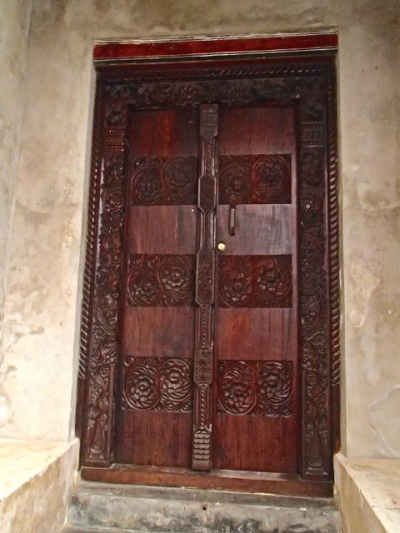

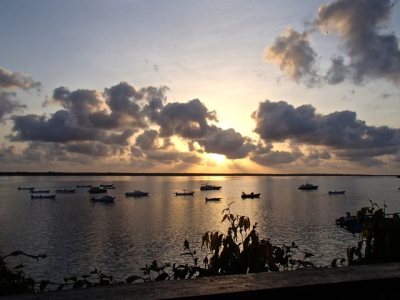


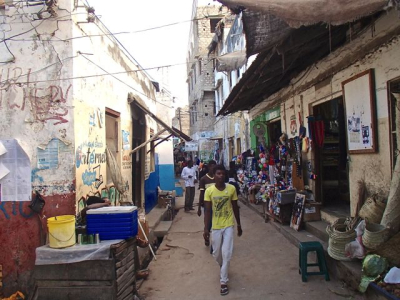

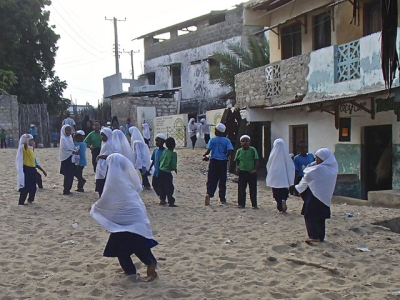

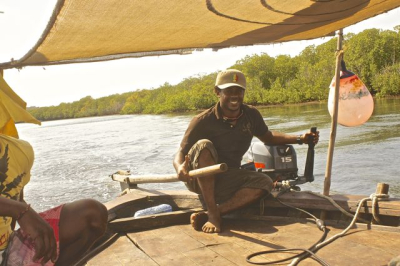
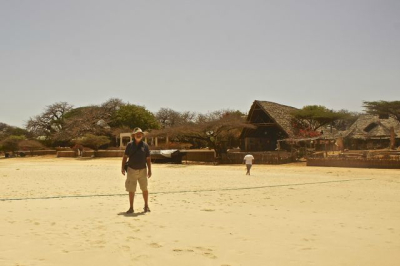

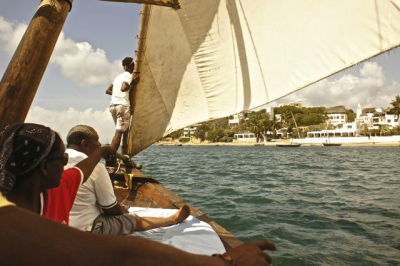



Skjekke ut bloggen min? Jeg har ukas blogg konkurranse! Delta?